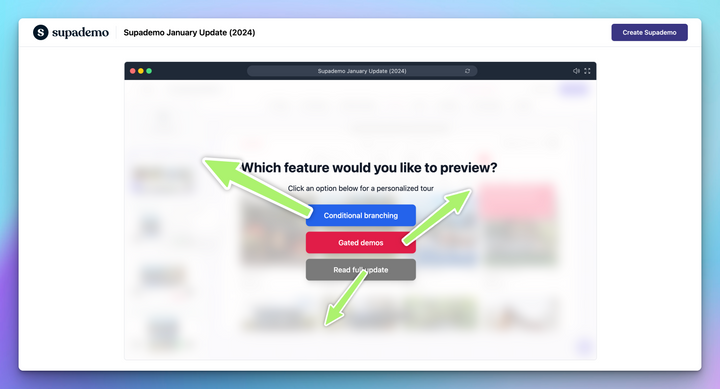In the world of sales, building relationships with prospects has long been considered a fundamental strategy for closing deals. However, a groundbreaking book called "The Challenger Sale" challenges this conventional wisdom and presents a disruptive sales model that has revolutionized the way businesses approach customer conversations. In this article, we will explore the key concepts of the Challenger sales model, its benefits, and its potential drawbacks.
Understanding the Challenger Sales Model
The Challenger sales model, as described by Matthew Dixon and Brent Adamson in their book "The Challenger Sale," is a sales methodology that focuses on teaching, tailoring, and taking control of the sales process. Unlike traditional relationship-building approaches, the Challenger sales model emphasizes challenging the customer's way of thinking and providing unique insights that reshape their perspective.
To understand the Challenger sales model, we need to delve into the five distinct profiles of sales reps identified by Dixon, Adamson, and their colleagues:
- The Hard Worker: These sales reps go the extra mile, are self-motivated, and seek feedback and development.
- The Relationship Builder: These reps excel at building customer relationships and generating loyalty.
- The Lone Wolf: These reps rely on their instincts and work independently.
- The Problem Solver: These reps are highly reliable and detail-oriented, ensuring all customer problems are solved.
- The Challenger: These reps have a different view of the world, understand the customer's business deeply, enjoy debating, and push the customer out of their comfort zone.
The Challenger profile is at the heart of the Challenger sales model. Challengers engage in constructive tension by challenging their customers' assumptions and offering alternative perspectives. They excel at teaching their customers about unknown problems or opportunities in their business that the sales rep's company is uniquely positioned to address.
The Power of Challenger Selling in the Digital Age
In today's digital landscape, B2B buyers are spending less time meeting with potential suppliers and more time conducting independent research online. Research from Gartner reveals that B2B buyers spend only 17% of their time meeting with suppliers while dedicating 27% to online research. This shift in buying behaviour has significant implications for sales strategies.
Thanks to the wealth of information available online, prospects now enter the sales process armed with preconceived ideas about product features and prices. They are less interested in being educated about the product's features and benefits and more focused on understanding why they should buy and what unique value the sales rep can offer.
This is where the Challenger sales methodology shines. Rather than rehashing information prospects already know, Challengers provide valuable insights that challenge the prospect's thinking and lead them to consider alternative solutions. By taking control of the sales conversation and teaching their customers, Challengers are trusted advisors who can guide the prospect toward the best decision.
The Benefits of Adopting the Challenger Sales Model
As products and services become increasingly complex, sales processes must evolve to address these complexities. The Challenger sales model offers several benefits for businesses operating in today's complex sales environments:
- Unique Perspective: The Challenger sales model enables sales reps to offer customers a fresh and unique perspective on their business challenges. By challenging the status quo, Challengers provide insights that other sales methods struggle to accomplish.
- Effective with Top Performers: The Challenger sales approach is particularly effective with top-performing sales reps. These individuals thrive in complex sales scenarios and possess the skills to challenge and teach their prospects effectively.
- Understanding Value Drivers: Challengers deeply understand their customers' value drivers. They can identify the economic drivers of their customers' businesses and guide the conversation toward discussing budgets comfortably.
- Solving Complex Sales Challenges: The Challenger sales methodology excels in complex sales situations where other methods may stagnate. It empowers sales reps to navigate intricate buying processes and close deals successfully.
Research supports the effectiveness of the Challenger sales model. Studies have found that 40% of top sales performers primarily use the Challenger sales approach, and over 50% of all-star performers fit the Challenger profile in complex sales. In contrast, the Relationship Builder approach, used by only 7% of high sales performers, yields the poorest results.
Potential Drawbacks of the Challenger Sales Methodology
While the Challenger sales model offers numerous advantages, it has limitations. Here are some potential drawbacks to consider:
- Best Suited for Top Performers: The Challenger sales methodology may be more challenging for average-performing sales reps. It requires a certain level of skill, confidence, and willingness to challenge the customer's thinking. Therefore, it may be best to focus initial training efforts on high-performing reps who have the potential to excel in this approach.
- Complexity vs. Simplicity: The Challenger sales model best suits complex sales cycles. The Challenger approach may not be as effective in simpler sales scenarios, where the customer's needs are straightforward. Sales reps must assess the complexity of each situation to determine whether the Challenger sales model is the right fit.
- Transition from Relationship Building: If sales reps have been trained primarily using relationship-building methodologies, transitioning to the Challenger sales approach may require a significant shift in mindset and skillset. Adapting to the Challenger model and developing the necessary teaching and challenging capabilities may take time and effort.
Applying the Challenger Sales Methodology
Now that we have explored the key concepts of the Challenger sales model let's discuss how to adopt and apply this methodology effectively. The Challenger sales methodology can be implemented in five steps:
Step 1: The Warm-Up
The first step is to build credibility with prospects by understanding their challenges and pain points. Sales reps should thoroughly research and investigate the prospect's needs and tailor their communication accordingly. The focus should be on the prospect's problems rather than the product or solution.
During this warm-up phase, sales reps should aim to:
- Explain why they are reaching out to the prospect and highlight typical issues the prospect might be facing.
- Establish themselves as experts by showcasing their experience and knowledge.
- Spark curiosity by introducing relevant facts or research related to the prospect's problem.
- Engage the prospect through visuals and interactive content, uncovering crucial pain points.
This step's goal is to initiate a thought-provoking conversation that will set the foundation for the rest of the sales process.
Step 2: Reframe the Conversation
In this step, sales reps dig deeper into the prospect's problems and challenge their existing perspectives. By reframing the conversation, reps help the prospect see their problems as growth opportunities and open their minds to alternative solutions. Key actions in this step include:
- Staying on topic and addressing the concerns identified in the warm-up phase.
- Surprising the prospect by exposing any misconceptions they may have about how to solve their problem.
- Addressing the problem with confidence and turning the conversation around to introduce better solutions.
Reps should aim to provoke curiosity and encourage the prospect to think differently about their challenges.
Step 3: Use Emotions
Emotions play a significant role in decision-making, even in B2B sales. Sales reps can leverage emotions to help prospects see the personal value in adopting new solutions. One effective approach is to share relatable customer stories that demonstrate the positive impact of alternative solutions. Reps can foster a stronger sense of connection and engagement by connecting emotionally with the prospect.
In this step, reps should:
- Tell stories that paint a vivid picture of what will happen if the prospect continues down their current path.
- Replace negative stories with real-life success stories backed by case studies.
- Incorporate visuals to enhance the storytelling experience and make the stories more memorable.
- Provide research and data to support the prospect's concerns and aspirations.
By appealing to the prospect's emotions and illustrating the benefits of change, reps can create a sense of urgency and desire for a better future.
Step 4: The Value Proposition
In this step, sales reps show the prospect the possibilities of a better future by aligning their problems with viable solutions. They paint a picture of positive outcomes and focus solely on presenting solutions rather than talking about the product. Key actions in this step include:
- Describing the positive future that awaits the prospect if they choose to take action.
- Presenting solutions that address the prospect's challenges and needs.
- Taking the time to explain any uncertainties and help the prospect connect the dots.
- Providing valuable insights and data that rationalize the proposed solutions.
The goal is to educate the prospect about the ideal solution without directly mentioning the product, allowing them to see the value of change.
Step 5: The Product
In the final step, sales reps introduce their product or solution as the logical choice based on the previous steps. By this stage, the prospect should already be convinced of the need for change and the benefits of the proposed solution. Sales reps should present their product as the exact solution that aligns with the prospect's goals and challenges.
Depending on the nature of the product, reps may offer a demo, a detailed walkthrough, or any other appropriate form of presentation. The focus should be on showcasing how the product addresses the prospect's specific needs and delivers the desired outcomes.
In Conclusion
The Challenger sales model challenges traditional sales approaches and offers a fresh perspective on customer conversations. By focusing on teaching, tailoring, and taking control of the sales process, sales reps can position themselves as trusted advisors who provide valuable insights and alternative solutions. While the Challenger sales model may not be suitable for all sales scenarios, it excels in complex sales cycles where customers are seeking a unique perspective.
By adopting the Challenger sales methodology and following the five-step process, businesses can empower their sales teams to engage prospects in meaningful conversations, challenge their assumptions, and guide them towards the best decision. The result is a more effective sales process that drives greater success in closing deals and establishing long-term customer relationships.
The Challenger sales model represents a significant departure from traditional sales strategies, but its potential for success in today's competitive marketplace cannot be ignored. By embracing this revolutionary approach, businesses can stay one step ahead and drive meaningful results in their sales efforts.




